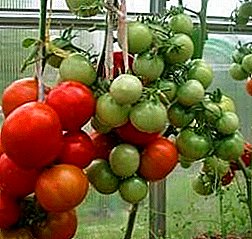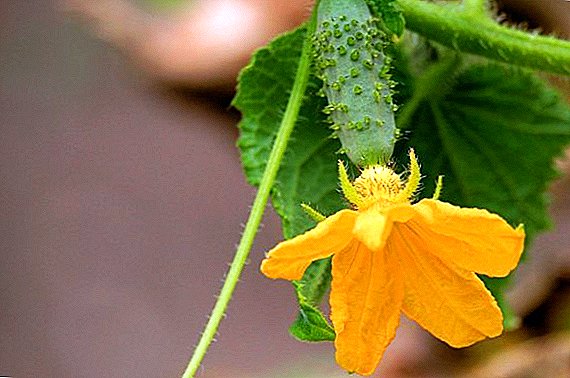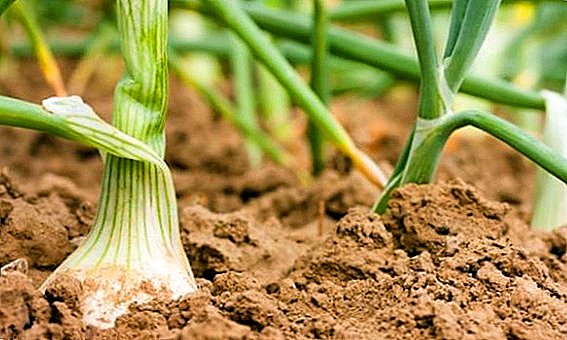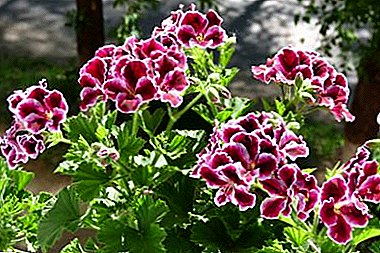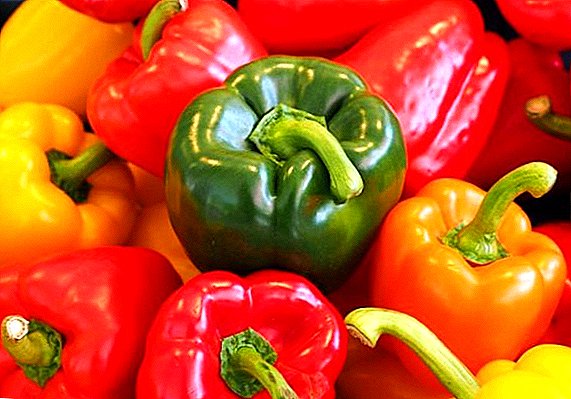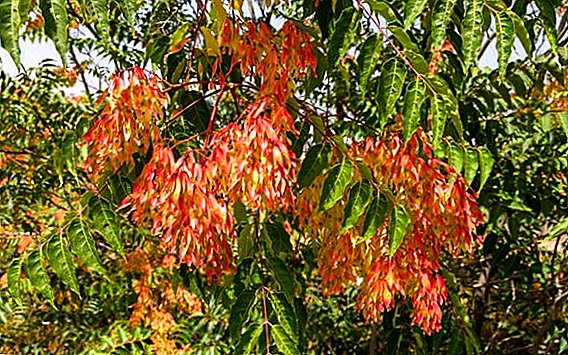 In parks and squares everywhere, especially in the southern regions, you can find a tall tree with unusual leaves and bright, elegant flowers-panicles. Few people know that it has healing properties and is a valuable food for a special silkworm, and also has a number of other advantages. This exotic tree, not like the others, is a native of mysterious Asia and is called the highest Aylanth, or Chinese ash.
In parks and squares everywhere, especially in the southern regions, you can find a tall tree with unusual leaves and bright, elegant flowers-panicles. Few people know that it has healing properties and is a valuable food for a special silkworm, and also has a number of other advantages. This exotic tree, not like the others, is a native of mysterious Asia and is called the highest Aylanth, or Chinese ash.
Botanical description
The height of Chinese ash on average is 20-25 m, but individual specimens can grow to 35 m. This tree is a plant of the first size, which is characterized by high growth. It belongs to the Simarub family.  Barrel Aylta cylindrical shape, not thick - up to 0.5 m, it is covered with a bark gray with notches. Young plants have an openwork crown that resembles a broad pyramid, while in older plants it has a tent-like, sprawling, young branches are down and have a dark yellow color.
Barrel Aylta cylindrical shape, not thick - up to 0.5 m, it is covered with a bark gray with notches. Young plants have an openwork crown that resembles a broad pyramid, while in older plants it has a tent-like, sprawling, young branches are down and have a dark yellow color.
The tree lives long enough, individual plants can exist up to 100 years.
Did you know? In the Indonesian dialect, “ailant” means “the tree of God” or “the tree of the gods,” but the people call it the dark-flowered tree, fragrant yason, chumak, paradise-tree, and smelly. The last name is due to the unpleasant smell that its male flowers emit, as well as the leaves rubbed between the fingers.
The leaves of the Chinese ash complex, reminiscent of palm. They are quite large, often half a meter and longer. They consist of about 25 smaller leaves of elongated ovoid shape, 10-12 cm long, supplied with 2-4 cloves at the base. The shade of the leaves is bluish.  Flowers at Ailanta are both bisexual and male, staminate. The latter exude an unpleasant odor. Greenish-yellow flowers are collected in large inflorescences, flowering occurs in summer, mainly in the beginning of summer. However, repeated autumnal flowering can occur, which is characterized by rather small peduncles.
Flowers at Ailanta are both bisexual and male, staminate. The latter exude an unpleasant odor. Greenish-yellow flowers are collected in large inflorescences, flowering occurs in summer, mainly in the beginning of summer. However, repeated autumnal flowering can occur, which is characterized by rather small peduncles.
The fruits of the tree of God are 4-centimeter red-brown lionfish, which, ripening by August, stand out clearly against the background of foliage.
Find out whether trees such as Amur velvet, ginkgo biloba, glaciation, paulownia, birch, catalpa, rough elm, eucalyptus, hornbeam, Japanese maple, poplar pyramidal, pine, red maple are suitable for decorating your plot.
Spread
The recognized homeland of Ailanta is China, where the tree was grown and cultivated for the purpose of silk production: there is a special silkworm aylanth feeding on its leaves.
In addition to China, Japan and other Asian countries, Ailant highest adorns the parks and gardens on all continents. It prefers a subtropical climate, but takes root in the temperate zone, in its southern regions.  The divine tree is widespread on the territory of Ukraine, in the Crimea, in the Caucasus, in the Stavropol and Krasnodar Territories, in the Rostov Region. In more northern regions, it also feels good, but it can freeze in cold winters in open areas.
The divine tree is widespread on the territory of Ukraine, in the Crimea, in the Caucasus, in the Stavropol and Krasnodar Territories, in the Rostov Region. In more northern regions, it also feels good, but it can freeze in cold winters in open areas.
Chinese ash can often be found in European and American parks, it also grows in Australia.
Chemical composition
The various parts of this amazing tree include:
- tannins;
- alkaloids;
- saponins and sterols;
- Siarubyn Lactone;
- coumarin heterozide;
- Ailanthin and other bitter substances;
- vitamin C;
- essential oils;
- carotene;
- carbohydrates.
 Due to their presence, the plant can be useful from a pharmacological point of view - for the manufacture of anti-inflammatory and antimicrobial drugs.
Due to their presence, the plant can be useful from a pharmacological point of view - for the manufacture of anti-inflammatory and antimicrobial drugs.For the manufacture of anti-inflammatory drugs are also used plants such as the Caucasian Dioscorea, berry yew, blue cyanosis, silver sucker, skumpiya, juniper.
Medicinal properties
The leaves and roots of this amazing tree have anti-inflammatory and antiviral properties. Traditional medicine recommends their use in the treatment of dysentery and malaria, as well as for getting rid of tapeworms.
The wood and bark of Chinese ash have an antimicrobial effect and are a strong natural antiseptic. These qualities of Ailantha will be useful in skin diseases, lichen, leishmaniasis.
Did you know? The drug "Ekhinor" and its analogue "Anginol", which were prescribed in the 70s of the XX century for the treatment of acute tonsillitis, were prepared on the basis of the fruits of aylanta, dried or fresh.

The bark covering the carrier trunk of the tree of God can be used for helminthic invasion, for treating diseases such as cholera, salmonellosis and dysentery, as well as for intestinal disorders. In addition, preparations of the cortex can affect the menstrual cycle.
If you have a sore throat, you can use for its treatment tincture of the fruits of Chinese ash.
Learn how to treat sore throat with acidic, dogrose, kalanchoe, physalis, bay leaf, crassula, red elderberry, goldenrod.
It will also be effective if stones are found in the gallbladder, as well as hemorrhoids.
Ailant, removing excess fluid from the body, can help in the fight against radiculitis, rheumatism and arthritis. Preparations based on it can be used as wound healing, laxatives and hemostatic agents.
Important! Only traditional Chinese ash seeds are not used in traditional medicine, since they are poisonous.

Preparation of raw materials
The following parts of the highest Ailanta are used for medical purposes:
- bark;
- roots;
- fruit;
- leaves;
- flowers
The bark of the tree of God is harvested in the first days of summer or a little earlier, before flowering begins, and the raw material is easily separated from the trunk.
Dig the roots should be late in the fall or very early spring, when sap flow is minimal.
The fruits are the main raw material that supplies Chinese ash. For medical use, the fruits should be taken mature - they contain such valuable bitter substances. After collection, the raw materials should be thoroughly dried, observing the technology.  The leaves are harvested before flowering, in early summer. The flowers are taken in the morning after the dew dries out in dry weather, it is advisable that there should be no rain for several days before.
The leaves are harvested before flowering, in early summer. The flowers are taken in the morning after the dew dries out in dry weather, it is advisable that there should be no rain for several days before.
Drying of the collected raw materials is carried out according to standard rules: in the shade, where there are no direct rays of the sun, in a freely ventilated place - in attics and under sheds, in shaded blown rooms. When drying the bark to preserve the nutrients contained in it, it is not possible to raise the temperature above 70 ° C.
Did you know? Chinese ash-tree was brought to Europe by a Jesuit monk Incarville, he planted it in the Chelsea Botanical Garden in the UK. After a few decades, the plant flooded the south of the British Isles and moved to the continental part of Europe, where it continued its triumphal march.
Contraindications
Clearly prescribed contraindications to the use of drugs from the Chinese ash does not existHowever, it is worth remembering that these drugs can become poisonous when used in large quantities. It is very important to adhere to the recommendations and strictly comply with the specified dosage. 
It should not be treated with the help of preparations prepared on the basis of an ailanta:
- people who have individual intolerance or are allergic to its components;
- to individuals who are prone to allergic reactions to plants in general;
- pregnant and lactating;
- children
Important! A gardener who cares for the tree of God must observe safety precautions and use gloves when in contact with his juice, for example, when pruning. The sap of this tree has irritating properties, and the skin of a caring gardener may suffer - a rash or irritation will appear on it.
Applying Ailanta
Despite the fact that the highest ailant is not recognized by official medicine and is not practiced in it, preparations made from its parts are used by folk medicine.  In addition to the healing Chinese ash has high decorative properties, as well as a unique survival rate and growth rate. It is impossible not to take advantage of these qualities when landscaping city parks and squares.
In addition to the healing Chinese ash has high decorative properties, as well as a unique survival rate and growth rate. It is impossible not to take advantage of these qualities when landscaping city parks and squares.
The limitation in the spread of this amazing tree is its thermophilicity, but it occupied its niche in the subtropical and warm regions of the temperate belts on almost all continents of the globe.
Did you know? The journal "Nature" in the 60s of the XX century became a field for heated discussions, in which the Chinese ash was blamed for the property cause in people Not only dermatitis, but also asthma attacks in individuals with asthma. However, the disputes ended in nothing due to the lack of any weighty evidence.
Wood and the juice of the divine tree are used in industry, and the leaves, as already mentioned, are fed by the silkworm silkworm producing high quality silk thread. 
In medicine
As mentioned above, the antimicrobial and anti-inflammatory properties of the bark of the Ailanta highest are used in the treatment of dysentery and intestinal disorders, as well as for the removal of tapeworm.
With the help of the fruits of Chinese ash, hemorrhoids are treated, and they also have the ability to stabilize the menstrual cycle.
To stabilize the menstrual cycle is recommended to use cyclamen, chokeberry, parsley, walnut septum, linden, mint tea.
The leaves are used to prepare preparations used in the treatment of ulcers, and from flowers, shoots and young bark - for scarlet fever and diphtheria. With the help of the fruits are treated bile and urolithiasis.
Important! Official medicine does not use this plant because of the toxicity of its juice. Adherents of traditional medicine should not exceed the recommended dosage, using in the treatment of drugs from the Chinese ash.

Very popular decoction of the leaves of the tree of God, it is used for:
- diseases of the upper respiratory tract;
- fevers;
- arthritis;
- radiculitis;
- rheumatism;
- renal diseases;
- bladder diseases;
- constipation;
- the need to stop bleeding;
- wound healing.
In landscape design
Chinese ash is not too cold resistantBut in the subtropical and warm regions of the temperate zone, it feels great, it grows abundantly and quickly. In addition, the tree is quite decorative and can decorate almost any landscape.
Recommended for single and group plantings in the composition of green spaces. 
Did you know? The legendary story associated with the amazing ability of the god's tree to heal itself occurred on the territory of the Karadag bio-station. There, in the 60s of the last century, its large thickets were cut down and asphalted the place where they grew. A year later, the asphalt cracked, and from the cracks formed, the young shoots of the highest Ailantha stretched toward the sun.
Due to the ability to produce a lot of basal siblings, the ailanth will be very useful if you need to quickly plant trees on the slopes.
In production
The highest ailant can be grown not only for beauty and medical needs. In addition to traditional medicine medicines, it is possible to make oil paints and varnishes, and even embalm corpses with this juice, from the juice of its bark resembling resin.
The wood of this unusual tree is quite dense, has a pinkish or beautiful white color. It is suitable for the manufacture of cladding materials and decorative products. In addition, it can make high quality paper.  And it is possible to even make gunpowder from the coal of Chinese ash.
And it is possible to even make gunpowder from the coal of Chinese ash.
Growing up
In suitable climatic conditions, ailant is the highest to grow easy. It is pulled out to a height of 3 m per year, resistant to pests and diseases, unpretentious to the soil and undemanding to light.
Of course, if you decide to decorate your summer cottage with such a "hurry", think twice whether it is worth planting a tree growing at the speed of weed.
Location
The biological features of Chinese ash are such that he loves light and heat, with an abundance of which is growing rapidly. That is why it is important to find a suitable piece of land for it. Suitable pritenenny, devoid of abundant sunlight and closed from the draft area.
Choosing a place for an Ailanta should be made carefully, since this tree is unfavorable for transplants: it is not very used to new lighting and adapts to a different soil for a long time. 
Did you know? The Ailanth was introduced to the Russian empire for breeding silkworms and producing high-quality silk following the example of India, China, and Japan. Very successful experiments were carried out in this field, which, however, were interrupted at the beginning of the 20th century for all known reasons that changed, in particular, the entire world economy. After the establishment of Soviet power, silk production was not established, and the Ailantes had already spread and take their place in ecosystems, in particular, in the Crimea and the Caucasus.
Landing
Fertilizers and nutrients should be applied to the soil before planting the Ailanthus. For planting the tree of God, dig up a square measuring 3 × 3 m, loosen the ground, remove the roots of weeds from it, spread the area and deposit ashes. You can plant or sow ailan the next day.
Seeds
Seeds of this tree do not lose their germination for 1.5-2 years under the conditions of storage - in dry paper or fabric bags in a ventilated place. Before sowing, seeds are soaked for a day and a half in warm water.
Ailanta seeds are sown in late autumn or early spring, buried by 2-3 cm in the soil. 
The method of reproduction using seeds is not very popular, as it is rather laborious in comparison with planting seedlings or root shoots. Germination of seeds - about 50%. It is difficult enough to grow a strong tree from a seed: it needs careful constant care.
Seeds sprout in about 2-3 weeks.
Seedlings
Reproduction with seedlings is the most convenient, fast and, most importantly, reliable way. It is his preferred gardeners, if there is such an opportunity.
After planting in the prepared dug up, freed from weeds and fertilized, the soil of the seedling should be watered. He gets accustomed soon enough, within 2-3 weeks, and immediately begins to grow.  When using this method, you can be more confident that the tree will take root, rather than during seed planting.
When using this method, you can be more confident that the tree will take root, rather than during seed planting.
Important! Males have a foul odor, so it is advisable to take into account this feature when purchasing and to give preference to the female plant.
Soil, fertilizer, dressing
Being a drought-resistant plant, ailant will easily transfer solonetsous, chestnut and other infertile soils. True, the return will also be small: the tree will not grow above 10-15 m and will die at the age of 35.
At the landing site of the Chinese ash it is necessary to bring manure, wood ash and mineral fertilizers within 24 hours.
Such fertilizers as Plantafol, Sudarushka, Azofoska, Kristalon, Ammophos, Kemira are referred to mineral fertilizers.
 Very favorably tree will react to top dressing. The first of them, organic and mineral, is produced when the snow melts, the second - in late autumn.
Very favorably tree will react to top dressing. The first of them, organic and mineral, is produced when the snow melts, the second - in late autumn.Care: watering and digging
Water the tree of God should be regularly, and with warm water, because cold can damage the plant and affect its development.
Digging pristvolny circle should be regularly, preferably twice a year. This measure is necessary for the tree to better absorb moisture.
Wintering
Although ailanthus is a heat-loving southern plant and does not tolerate frosts very well, with proper care and protection, the tree is able to survive even at 30 degrees of frost.
However, it is desirable to protect it at the stage of site selection and choose a place protected from winds. You can plant Ailanta groups for better mutual protection. 
Important! For the winter, be sure to mumble the tree trunk.
Parasites, diseases and pests
To protect against rodents, it is advised to wrap the trunk for the winter with a layer of cardboard, on top of which - to cover with roofing material. This not only prevents rodents from getting to the bark, but also provides additional protection from cold and frost.
Ailanth is immune to diseases and common pests of trees. This could make it almost an ideal plant if it had not grown so aggressively in suitable conditions.
A more unpretentious and at the same time ornamental plant than the highest ailant is difficult to find. However, its ability to grow rapidly can be both a virtue and a disadvantage, depending on the intentions of the gardener.  Before you get a sapling of the original tree for your site, you should carefully examine its characteristics.
Before you get a sapling of the original tree for your site, you should carefully examine its characteristics.
Feedback from network users




